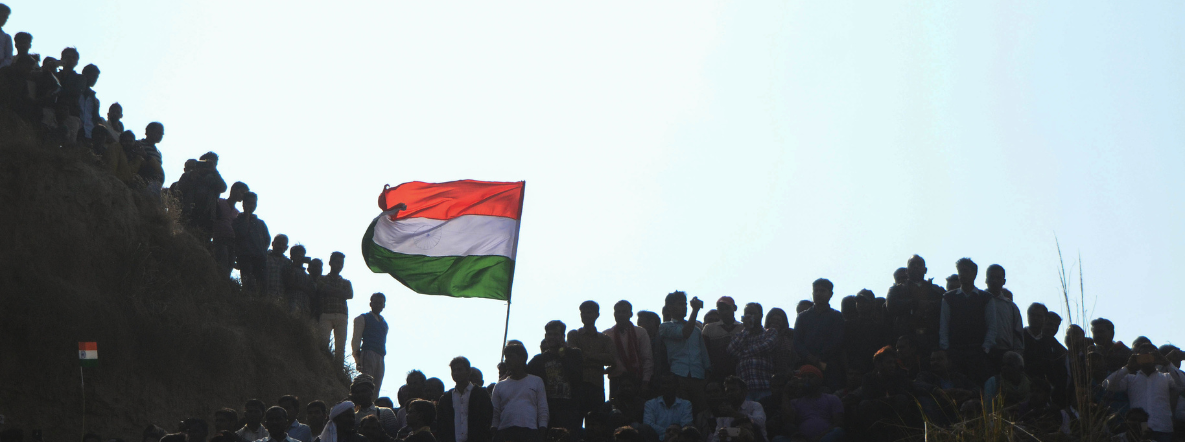India in 2023: The challenge and opportunity of being the most populous country
12 Jul 2022
Opinion: Sonalde Desai
The size of our labour force is constrained by the absence of women from the workforce. Only about 30% of women aged 15 and above are employed either in wage work on family farms and businesses.
The United Nations Population Division released a new set of population projections on July 11 World Population Day. These projections show that India will become the most populous country in 2023 earlier than the year 2027 as expected. However this is not because India has not successfully implemented its population policy but because China’s fertility is lower than anticipated. Following years of stringent population control restricting most couples to a single child in 2016 China relaxed its one-child policy to allow two children. Then in 2021 it was further relaxed to allow a third child. Nonetheless Chinese couples seem to have adjusted to life with a single child and the Total Fertility Rate (TFR) in China is barely 1.16.
The size of the population is intimately connected to the power dynamics shaping the relationship between nations regions and generations. It is however a double- edged sword that needs to be skillfully wielded. So what do population transformations around the globe and within India herald for challenges facing Indian public policy? The following 25 years will bring three different changes in the centre of population gravity: Between nations between states and between generations. Each will require a finely calibrated response.
First over the next 25 years as India approaches a century we will be blessed with a massive workforce that will cast a long shadow. Globally one in five working-age persons will live in India. The challenge is that a sizeable working-age population does not mean many workers. The size of our labour force is constrained by the absence of women from the workforce. Only about 30 per cent of women aged 15 and above are employed either in wage work on family farms and businesses. With sharply declining fertility and rising education many Indian women would like to work if they can find suitable jobs. Unless they can be welcomed into gainful employment we will not be able to reap the hoped-for demographic dividend.
Women are shut out of many sectors of the Indian economy. The absence of women in factories the transportation sector and skilled blue-collar work is striking.
Making these occupations female-friendly is essential if we are to reap a gender dividend.
The second aspect of the demographic centre of gravity relates to population distribution between states. With fertility transition beginning in southern states and slowly spreading to central India future workers will come from the central part of the country precisely the states that have lagged behind in fertility transition so far. As Professor P M Kulkarni projects the southern states already facing the burden of caring for a larger proportion of the population aged 65 and above will be even more stressed in years to come.
Thus the future of India rests in the hands of children growing up in UP Bihar and Madhya Pradesh today. We will need to ensure that the education system in these states is prepared to meet this challenge. With industrial growth concentrated in coastal regions and the bulk of our workers coming from central areas we will also need to figure out how to deal with interstate migration. Already Tamil workers are working in Chennai auto factories while workers from Odisha and Uttar Pradesh are working in tea and cardamom plantations of Tamil Nadu. As trains of interstate migrants during the pandemic highlight we will need better policies to integrate and support migrant workers in their new homes if we are to adjust to changing demographic realities.
The changing centre of demographic gravity is also reflected in changing inter- generational relations. UN median projections show Indian fertility stabilizing slightly below the replacement level of Total Fertility Rate (TFR) of 2. However they have a broad band of uncertainty around this estimate with some estimates falling substantially below 2. A comparison of India’s population pyramid in 2047 with the projected population pyramid for China provides a stark picture of the different challenges the two countries will face. China must cope with an enormous old-age dependency burden with no relief from successively smaller child cohorts.
However in 2047 a large proportion of the Indian population will be of working ages. This large cohort will be succeeded by somewhat smaller cohorts but not as small as those of China.
However after 2050 the older population will rise sharply; by 2100 about 30 per cent of the Indian population will be 65 and above. With small families these older parents will have two or fewer children to support them making it difficult for Indian parents to rely on their traditional mode of survival living with one or more sons. This suggests that we must develop more robust systems of old-age support.
This should include a combination of private savings public social security programmes and an increase in retirement age allowing the older population to be economically active for a longer time and save for their future. In addition sincemost of these elderly will be women we will also need to increase women’s control over family’s savings land and residence.
We must find a way of getting comfortable with this changing centre of demographic gravity and learn to manage it. The National Population Policy of 2000 focused on promoting the small family norm. A National Population Policy of 2022is needed that adds the management of changing size and composition of the Indian population to its agenda.
The writer is Professor and Centre Director NCAER National Data Innovation Centre and President of Population Association of America. Views are personal.
Published in: The Indian Express , 12 Jul 2022






